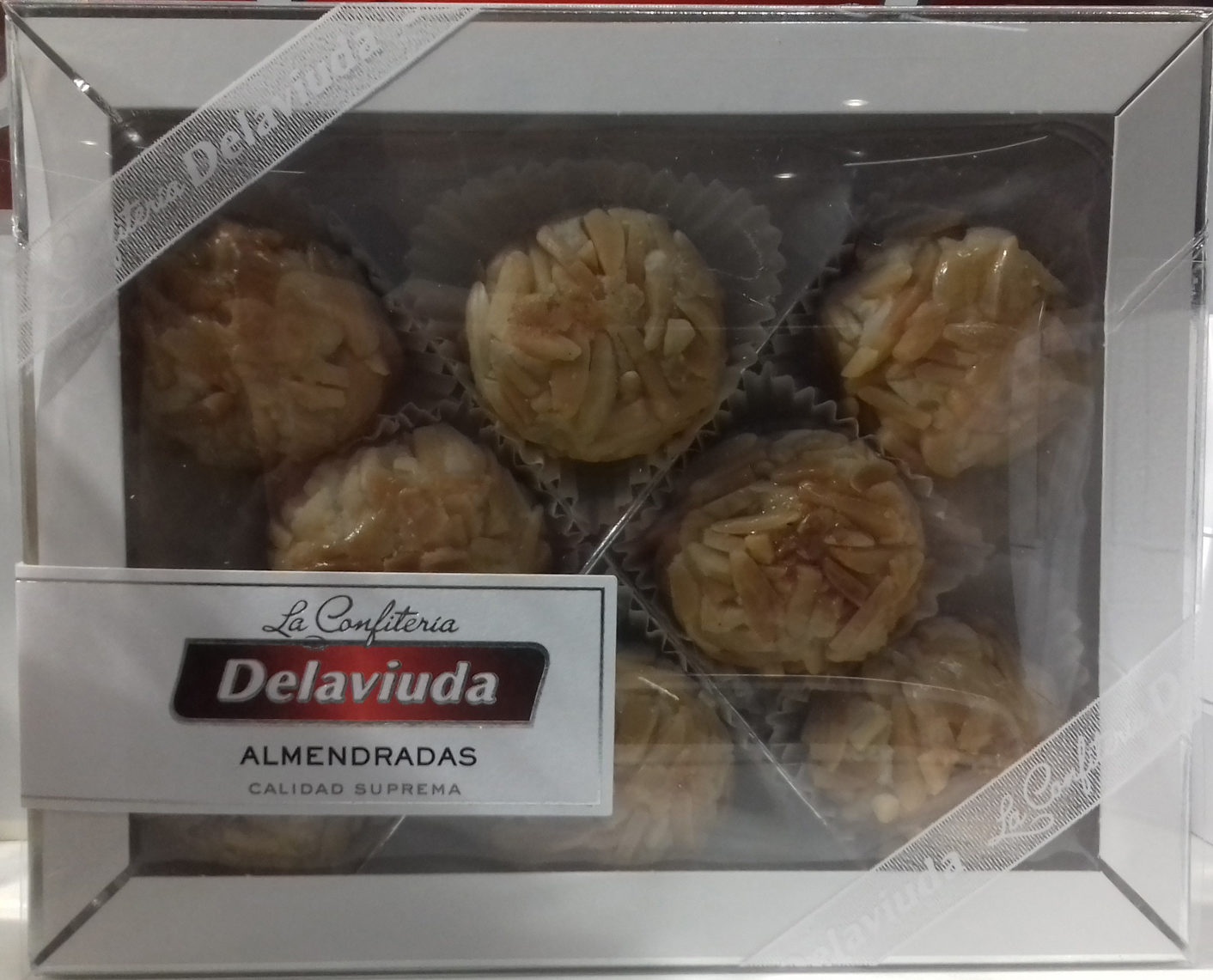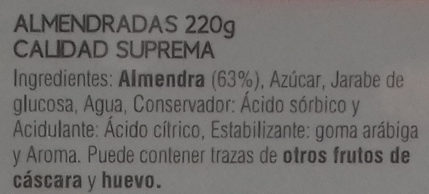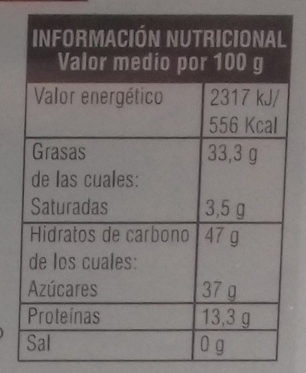Almendradas - Delaviuda - 220 g (8 unidades)
Aquesta pàgina del producte no està completa. Podeu ajudar a completar-la editant-la i afegint-hi més dades a partir de les fotos ja disponibles, o fent-ne més amb l'aplicació de androide o iPhone / iPad. Gràcies!
×
Codi de barres: 8410223601540 (EAN / EAN-13)
Nom comú: Almendradas. Calidad suprema
Quantitat: 220 g (8 unidades)
Empaquetament: Plàstic, 22 PAP, en:Box, en:container
Marques: Delaviuda
Categories: Snacks, Aperitius dolços, Llaminadures, Aliments festius, Aliments i begudes de Nadal, Dolços de Nadal, Massapà
Etiquetes, certificacions, premis:
Punt verd, es:Calidad suprema
Llocs de fabricació o processament: España
Enllaç a la pàgina del producte en el lloc oficial del productor: http://www.delaviuda.com/las-especialida...
Botigues: Carrefour
Països on es va vendre: Espanya
Matching with your preferences
Entorn
Empaquetament
Transport
Report a problem
Fonts de dades
Producte afegit per neptuno
Última modificació de la pàgina del producte per packbot.
La pàgina del producte, també editada per musarana, roboto-app.











